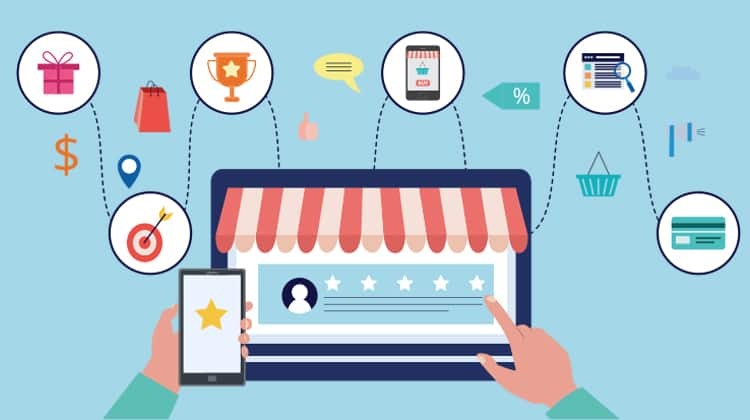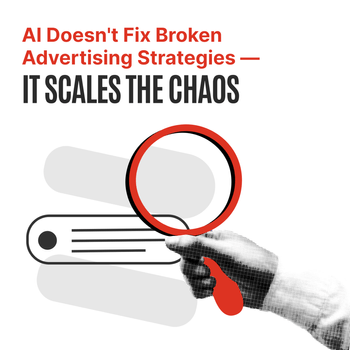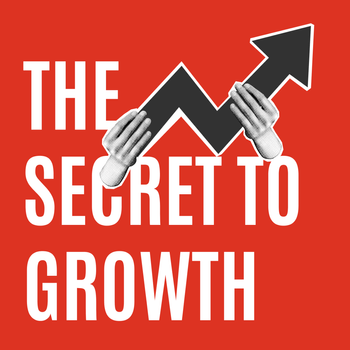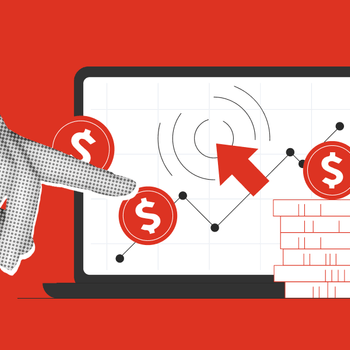Getting Your Buyer Journey Right: The Power of Personas
by Aden Andrus • February 26, 2021
If you’ve been in marketing for a while, you’re probably familiar with the idea of buyer personas and buyer journeys.
In a nutshell, a buyer persona is a fictional representation of one of your ideal customers. A buyer journey is an outline of the various steps potential customers take as they become actual customers.
A good buyer persona gives you all kinds of insights into who your customers are and why they buy. However, taking that knowledge and translating it into action items for your business is often easier said than done.
And that’s where your buyer journey comes into play.
For most marketers, the buyer journey is a fairly simple, one-size-fits-all road to success. But if you think about it, that doesn’t really make sense.
After all, if your customers all fell into a one-size-fits-all mold, why would you need buyer personas?
In reality, every person who buys from your business is on their own individual buyer journey. They have their own individual needs, obstacles and motivations. Under perfect circumstances, you’d have a specific roadmap for each prospective customer that would give them exactly what they needed—when they needed.
Circumstances aren’t perfect, though, which is why we have buyer personas and buyer journeys to help us wrap our heads around how different types of customers interact with our businesses.
In this article, we’re going to take a look at what your buyer personas mean to your buyer journey and how to adapt your journey to meet the needs of different personas.
Sound like a plan? Let’s get started!
Adapting Your Buyer Journey
To really make the most of your buyer personas, you have to craft a specific buyer journey for each buyer persona. To show you how this works, let’s use the infamous Pelaton stationary bike as our example.
For the sake of this section, let’s assume that Peloton has two basic buyer personas: Shy Sally and Busy Britt.
Here’s a very rough breakdown of each of these personas:
Shy Sally
- Demographics
- Late 20’s
- Married or living with a boyfriend
- College graduate
- $65,000 household income
- Lives in condo/townhouse
- Traits
- Loves to travel
- Likes getting out in nature
- Spends a lot of time on social media, especially Instagram
- Works full-time, often as a teacher, secretary, receptionist or similar profession
- Motivations
- Avoids drawing attention to herself in public
- Self-conscious about the extra pounds she’s put on in recent months
- Feels exposed and judged when she goes to the gym
- Looking for an easy way to stay in shape without having to leave the comfort of her home
Busy Britt
- Demographics
- Early-to-mid 30’s
- Married with 1-2 kids
- College graduate
- $85,000 household income
- Purchased a home 2-3 years ago
- Traits
- Highly driven
- Loves spending time with people
- Interested in fashion and current trends
- Very active on social media, especially Facebook
- Works full-time, typically in a busy managerial or leadership role
- Motivations
- Highly goal-oriented and loves the feeling of achieving her goals
- Frustrated by her inability to shed her baby weight
- Between work and being a parent, has a hard time fitting exercise into her daily routine
- Used to visit the gym every day, but hasn’t used her membership in the past few months-to-years
As you can probably imagine, Shy Sally’s road to buying a Peloton may have some elements in common with Busy Britt’s, but their goals and motives are so different that it would be foolish to assume that their buyer journeys will have much in common.
However, this is exactly the sort of assumption that most ecommerce marketers make. Many ecommerce marketers put together buyer personas. Many put together buyer journeys. But very few create specific journeys for their personas.
And then, they wonder why their marketing isn’t working…
Now, if you’ve never mapped out your buyer journey before, it’s an incredibly insightful process. There are a lot of different ways to think about or structure your journey and the right approach will probably be specific to your business and what you’re selling.
Regardless of how they are broken down or presented, though, most buyer journeys have 7 general phases:
- Awareness
- Knowledge
- Consideration
- Decision
- Trial
- Settledown
- Relationship
If you’re in marketing, some of these phases may be a bit of an unknown to you, but they’re all part of the buyer journey. They all matter, and you may interact with different buyer personas differently at each stage in the journey.
To show you how complex the interplay between buyer personas and buyer journeys is, let’s take a look at each of these stages and talk about how Peloton might adapt their strategy in each stage of their buyer journey to the needs and expectations of Sally and Britt.
1. Awareness
In ecommerce, “awareness” is typically used to describe the point at which customers become aware of your business and enter your marketing funnel.
For example, Shy Sally might see an ad on Instagram or read a post from one of her favorite influencers about their Peloton. Busy Britt is more of a go-getter, so she might start by searching on Google for “best at-home spin bike”. She sees an ad for Peloton and clicks to learn more.
Either way, both Sally and Britt enter this stage of their journey once they discover that Peloton has a product that can meet their needs.
From a marketing perspective, this is one of the most important steps in your buyer journey. Where and how people discover your product(s) can have a huge impact on whether or not they decide to buy.
This is particularly important if you are selling impulse buy products. If you don’t make an immediate great first impression, potential customers won’t ever get any further than the awareness phase.
With all of that in mind, the two most important things to focus on in this phase are targeting and messaging. If you aren’t getting in front of the right people in the right place with the right message, they might be aware of your business…but all they’re aware of is that they don’t want what you’re selling.
In the case of Sally, you will want to focus on running ads on Instagram that focus on how the Peloton makes it simple to stay healthy without ever leaving your home. For Britt, you may want to run paid search and Facebook ads that emphasize the results she’ll get and how easy it is to fit meaningful Peloton workouts into your busy day.
The key to success is to understand how your potential customers are finding your business and why they are interested in your product(s). The better you understand the pressures that are driving your customers, the easier it will be` to show them how your business can meet their needs.
2. Knowledge
Once your customers become aware of your product(s) as a potential solution, they want to learn more. For some products, this may be as simple as poking around your website. For others, it may be the beginning of a long research process.
Here, the right approach will depend on what you’re selling.
For impulse-buy or quick-fix products, your website needs to fill prospective customers with confidence and get them excited to buy now…before the initial thrill of discovery wears off. Reviews, sales, testimonials and an easy-to-use site are all great ways to make buying from you as easy and mindless as possible.
For more expensive and/or more involved products like the Peloton, however, getting a prospective customer through the knowledge stage can take a little more effort. There’s a good chance that potential customers will do their homework before buying from you, but if you can help guide them through this stage, you can help ensure that your product is obvious choice.
Podcasts, unboxing videos, sponsored reviews from influencers, testimonials, feature comparison charts, infographics and more are all great ways to help potential customers through the knowledge phase. The more helpful you can be, the more they will trust your business…and the more likely they will be to buy from you.
So, in the case of Shy Sally, you may want to offer a “Which Peloton is right for you?” downloadable on your site. Once you have her email address, you can then send an email series with links to articles about how spin bikes make exercise easy and testimonials from customers.
Busy Britts will probably do their own research, so reaching out to YouTube health influencers to do reviews of your bikes and ensuring that your bikes rank well on external spin bike review pages and articles is a great way to go.
If you understand how your customers acquire information about their options during this phase, you can often find ways to insert yourself into the information-gathering process. Along the way, you become a trusted ally—which is a great first step towards winning their business.
3. Consideration
Depending on what you’re selling, the consideration phase can relatively quick. For a $20 T-shirt, the consideration phase may be as simple as “Do I really want this shirt enough to spend $20 on it?” If the answer is yes and they feel like they can trust your business, they’ll buy.
For other products, however, the consideration process can take a lot longer. Shy Sally might think about spin bikes for months or even years before committing. Busy Britt might want to buy a Peloton, but needs to decide whether or not to get something cheaper from a competitor or save up to buy the more expensive bike.
In these types of situations, your goal is to do whatever you can to simplify and shorten the consideration phase.
Shy Sally may need motivation. Sending her a “Be your best you” email offering free access to all of your spin classes for a year if she makes a purchase by the end of the month could do it. Or, maybe you can just send regular emails with inspiring stories from Peloton users talking about how easy their bikes are to use and the great results they’re getting.
For Britt, offering an interest-free installment plan that lets her pay off the bike while she uses it could be all that she needs to pull the trigger.
Regardless of how you do things, the key is to understand what is keeping each persona in the consideration phase and then finding a way to remove or diminish that concern or need.
The longer someone stays in the consideration phase, the less likely they are to buy. So, if they’ve made it this far, you have to do whatever it takes to keep them moving before you lose them forever.
4. Decision
Once your customers get through the consideration phase, they’re ready to commit. For your customers, this is possibly the most stressful stage in their journey, because it’s the only stage that involves any real, direct risk for them.
Up till the decision stage, everything is simply theoretical. They think your product is interesting, learn more about it and figure out whether they want it enough to buy it.
But they still haven’t put their money where their mouth is.
At this point, you want everything to go as smoothly as possible. Remember, your customers are feeling nervous, which means their brains are looking for threats. If your checkout experience isn’t smooth, your follow-up emails aren’t prompt, or if the discount you offered doesn’t work, you may very well lose the sale.
For ecommerce businesses, the most important thing to do is make good on your promises. If you offered Britt financing options, those options should be easy to access and use. If you offered Sally free classes, those classes should be obvious during the checkout process.
Uncertainty is the enemy of conversion, so make sure that everything on your site builds confidence and minimizes fear and confusion. Do that, and your customers should breeze through this stage.
5. Trial
While you don’t want your customers to think of their new purchase as a “trial period” for your product(s), the days, weeks and even months after someone buys from you basically amount to a trial phase.
With today’s ever more lenient return policies, your ability to deliver on the promises made during the first five stages of your buyer journey will determine whether or not the sale you just made sticks around.
This is a critical time for your business, because even customers who are “all-in” aren’t really “all-in”. Yes, Sally may have decided to go with your business, but you’re still a relative unknown. If she feels like her Peloton isn’t living up to the hype, it won’t be long before she wants her money back.
Fortunately (and unlike a true “trial period”), returning an unwanted product is more of a headache than canceling an unwanted subscription. However, even if people don’t return what they bought, if they find your Peloton frustrating and hard to use, they’re not going to be happy about their purchase.
Remember, it typically costs far more to land a new customer than it does to keep an existing customer around. Marketing is a big investment—one that needs to pay off.
To ensure that your new customers become repeat customers, it’s critical to think about things from your their perspective. What sort of expectations does Britt have? What is she looking for from her Peloton? When her sister asks her if her new spin bike was worth it a few months from now, what can you do to ensure an enthusiastic response?
The better you can answer these types of questions, the more likely you are to make it through this crucial phase and build a loyal customer base.
6. Settledown
The settledown phase is fairly straightforward. Once you’ve made it to this phase, your customers are starting to feel good about buying from you. They took a gamble…and it paid off.
During this phase, most ecommerce businesses lean on marketing automation to manage the customer experience. At this point, the goal is to keep the customer happy and continue to build trust in your brand.
For Sally, this might mean regular emails with at-home exercise tips and motivational quotes. For Britt, this might be an app that shows her progress towards her fitness goals.
The longer you continue to exceed expectations and deliver a great experience, the more calm your customers will feel. Their needs and worries have been resolved, so they can move on to other, more pressing issues.
As far as your customer journey goes, you want to feed into that feeling. You want every interaction to fill your customers with peace, confidence and the assurance that buying from you was a good choice…and one they should continue to make in the future.
7. Relationship
By the time you’ve made it through the settledown phase, you’ve hopefully wowed your customers to the point that they love your business. You’ve made life better for them and your products have become a valued part of their lives.
At this point, you’ve established a real relationship.
Once you have this kind of relationship and history, your customers are invested in helping your business succeed, too. You’ve given them a great experience, and now they’re happy to return the favor.
So, need a great testimonial about how much weight the Peloton can help you lose? Britt would love to share her results. In fact, she may be one of your biggest advocates with her peers and associates.
Releasing a new series of classes? Sally would probably love to hear about it. Or, if you need a product or class review, she’s got your back.
This is where your customer journey pays off big time. Your customers have now gone from a marketing cost to a marketing asset. They’re getting results, you’re making good, sustainable money and everyone is enjoying the relationship.
It can take a lot of time and work to get to this point, but once you do, these customer relationships form the backbone of your business. They’re easy to maintain, highly profitable and just plain fun!
In the end, this sort of relationship is the whole reason why you invest in crafting persona-specific buyer journeys. The better you are at cultivating great customer experiences, the more of these relationships you’ll develop and the better your business will perform.
Conclusion
Too often, ecommerce marketers underestimate the power of their buyer personas. They view them as little more than lists of demographics and traits they can use for ad targeting.
This couldn’t be farther from the truth.
A good buyer persona affects every aspect of your business. If two types of customers are different enough to merit their own buyer personas, it’s only natural to assume that they’ll have their own unique buyer journeys. If you don’t recognize that and account for it in your business decisions, don’t be surprised if you struggle to attract, close and keep your customers.
But, if you can identify what makes your different personas tick and how to connect with them in each stage of their buyer journey, you’ll be in a great position to stand out from the crowd and convince them to buy (and keep buying) from you.
How do you use your ecommerce buyer journey? Do you account for differences in your buyer personas? What do you think of this approach? Leave your thoughts in the comments below.





